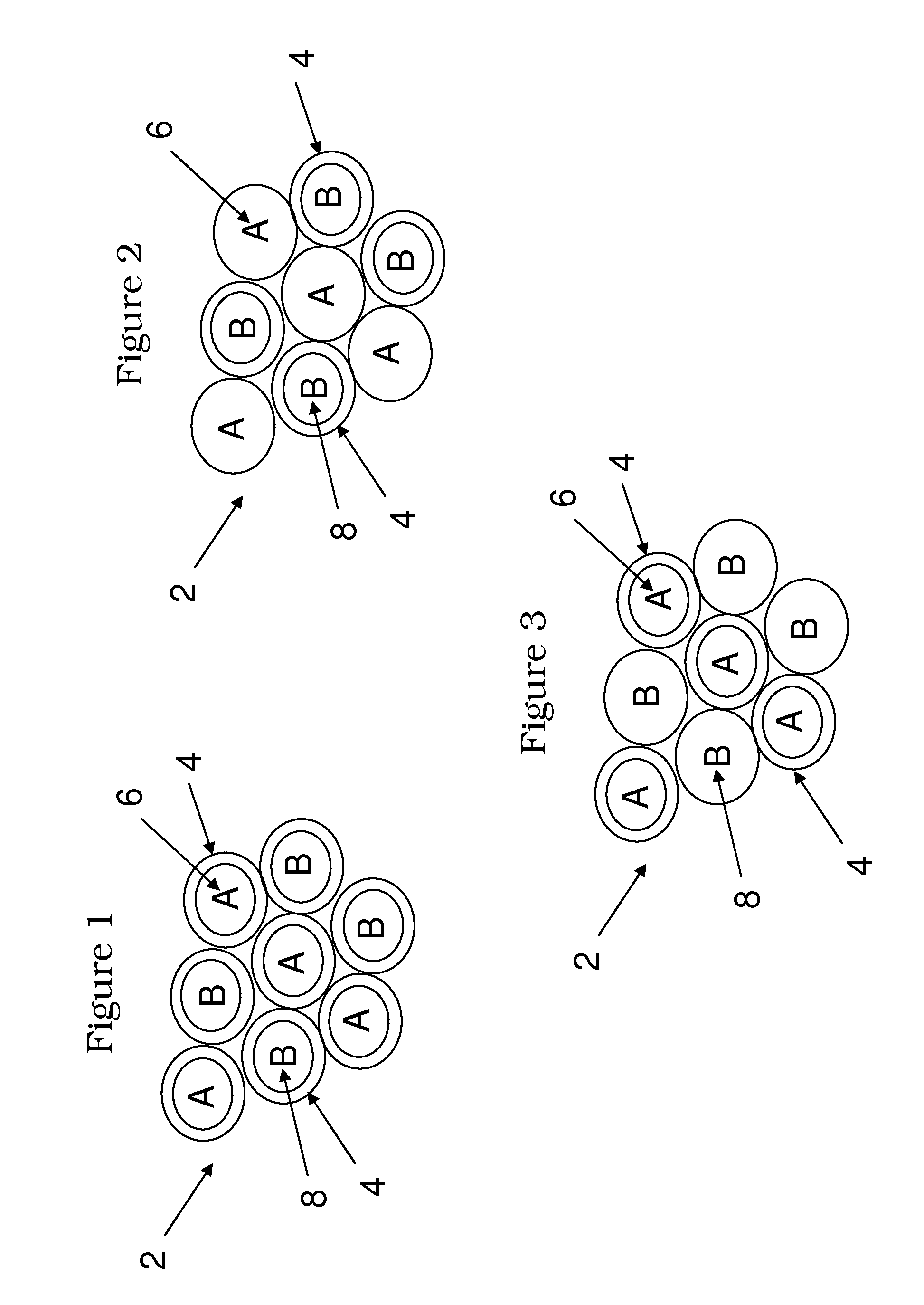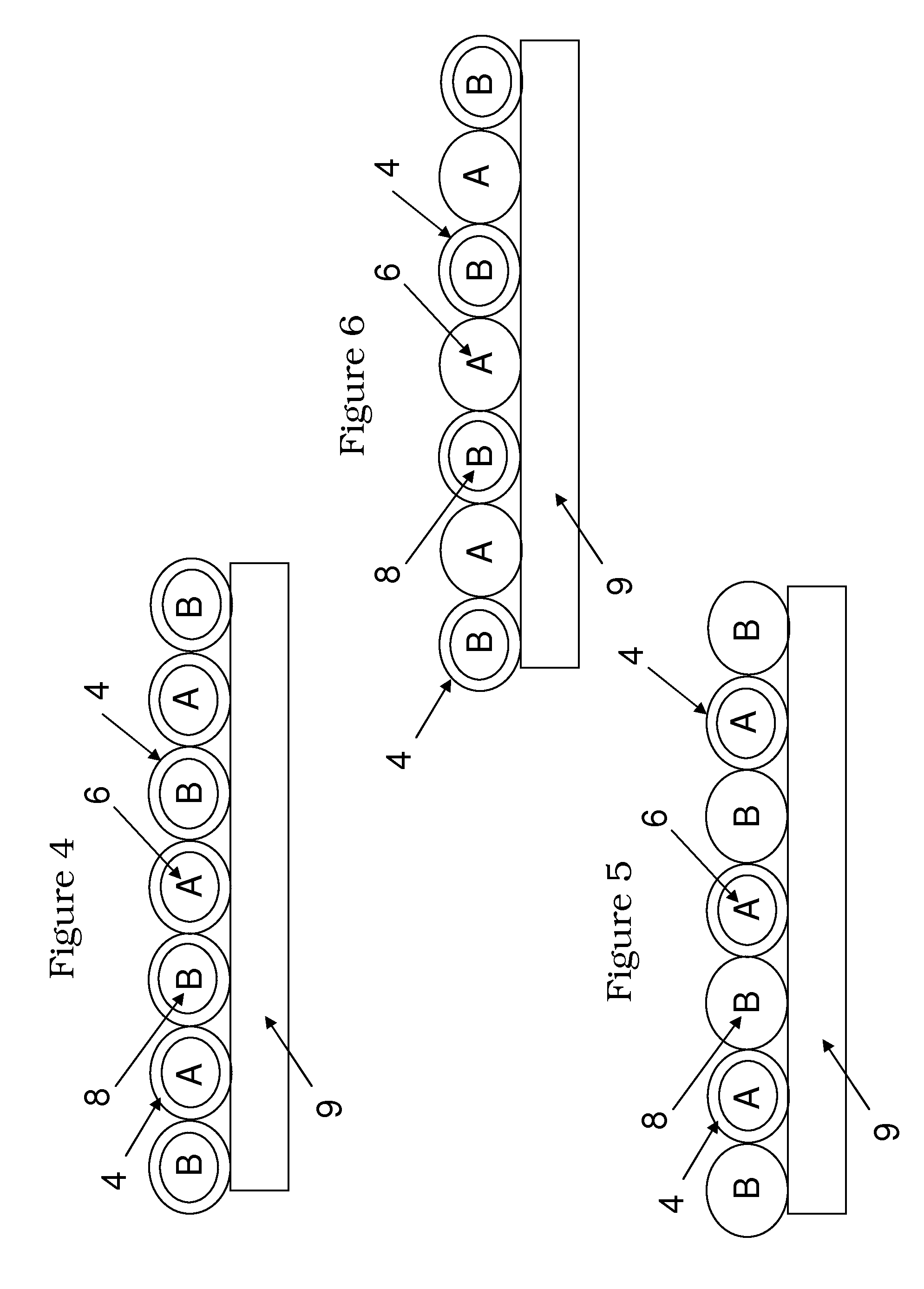Photoinitiated optical adhesive and method for using same
- Summary
- Abstract
- Description
- Claims
- Application Information
AI Technical Summary
Benefits of technology
Problems solved by technology
Method used
Image
Examples
Embodiment Construction
)
[0037]FIG. 1 illustrates an exemplary embodiment of a mixture 2 comprising capsules 4. The capsules 4 may contain either a resin portion 6 or a catalyst portion 8. The capsules 4 may also contain any other material or additive necessary to facilitate adhesive formation between the resin portions 6 and the catalyst portions 8. The capsules 4 prevent the resin portions 6 and the catalyst portions 8 from coming into direct contact with one another. The use of the capsules 4 allows the resins portions 6 and the catalyst portions 8 to be premixed eliminating the need to mix multi-part adhesives during the bonding process.
[0038]FIGS. 2 and 3 illustrate other exemplary embodiments of the mixture 2. FIG. 2 illustrates a mixture 2 wherein only part B 8 is encapsulated. FIG. 3 illustrates a mixture 2 wherein only part A 6 is encapsulated. By providing a capsule 4 (encapsulating element) around either part A 6 or part B 8, the components remain isolated from one another. An advantage of encap...
PUM
| Property | Measurement | Unit |
|---|---|---|
| Thickness | aaaaa | aaaaa |
| Perimeter | aaaaa | aaaaa |
Abstract
Description
Claims
Application Information
 Login to View More
Login to View More - R&D
- Intellectual Property
- Life Sciences
- Materials
- Tech Scout
- Unparalleled Data Quality
- Higher Quality Content
- 60% Fewer Hallucinations
Browse by: Latest US Patents, China's latest patents, Technical Efficacy Thesaurus, Application Domain, Technology Topic, Popular Technical Reports.
© 2025 PatSnap. All rights reserved.Legal|Privacy policy|Modern Slavery Act Transparency Statement|Sitemap|About US| Contact US: help@patsnap.com



